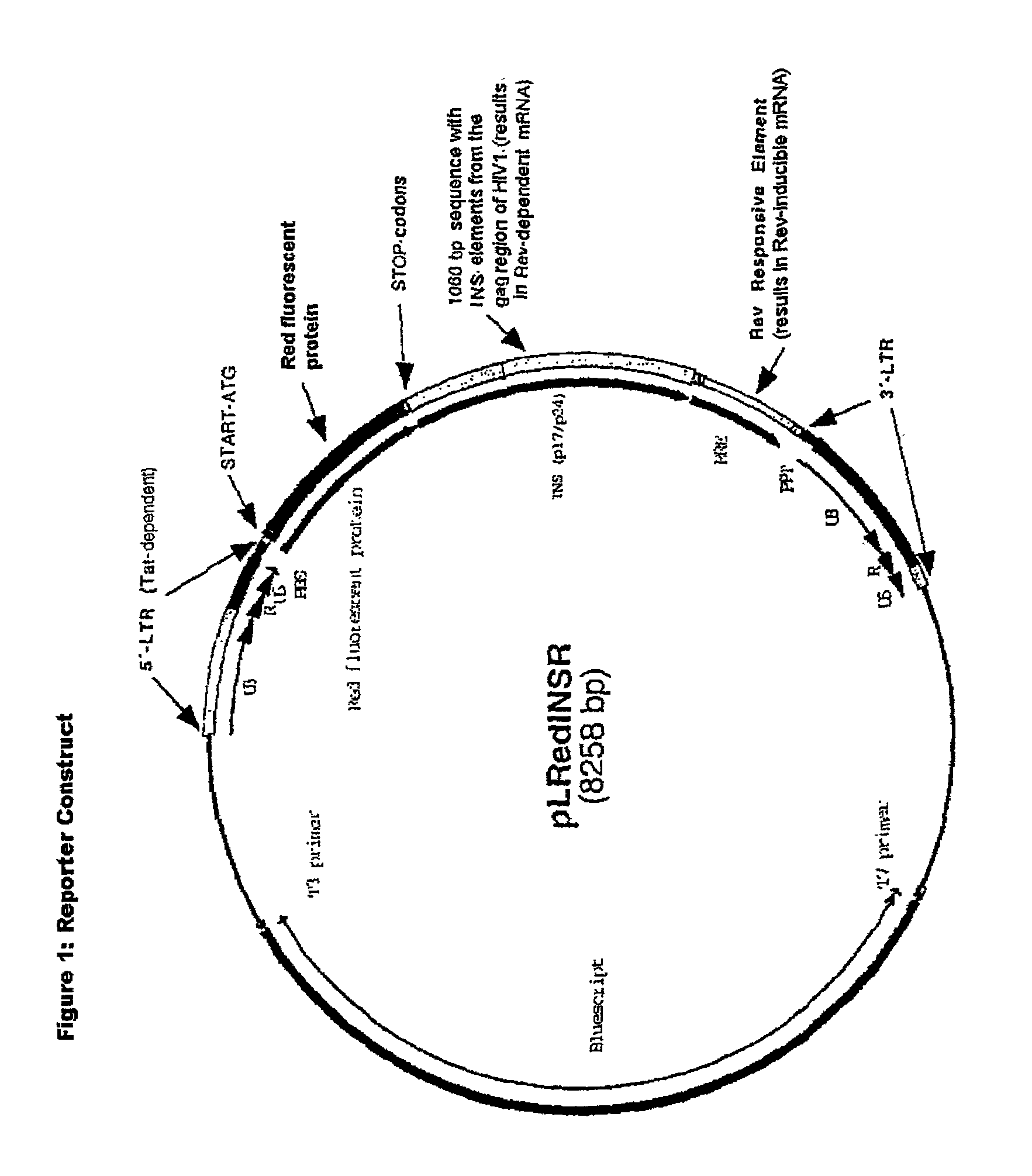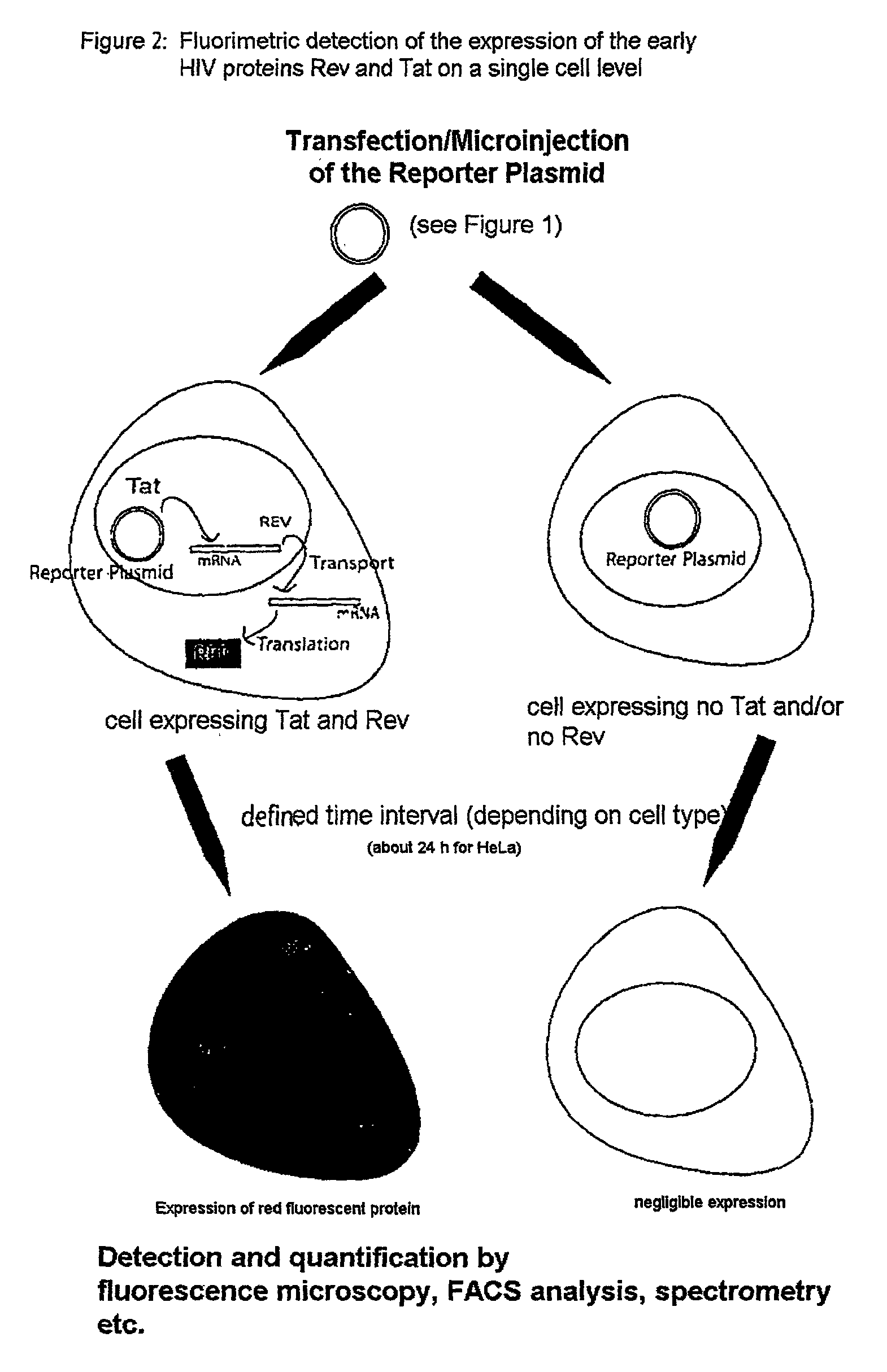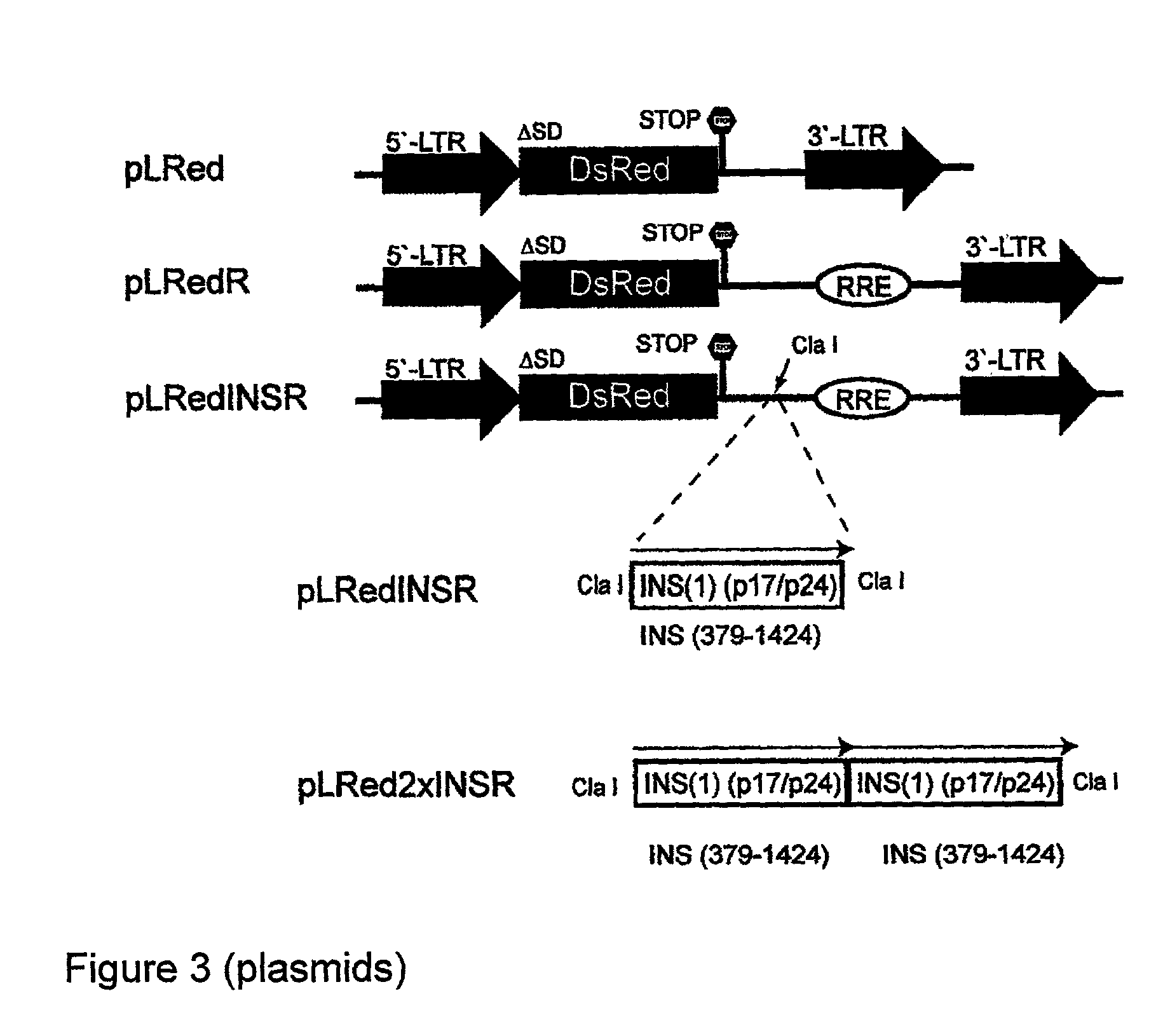Reporter gene construct for the detection of HIV Rev and HIV Tat
a reporter gene and protein technology, applied in foreign genetic material cells, virus peptides, sugar derivatives, etc., can solve the problems of requiring cell lysis, unable to use the cell population again, and high time and material resources, and achieves strong expression of reporter proteins, simple and cost-effective use, and quick and cost-effective
- Summary
- Abstract
- Description
- Claims
- Application Information
AI Technical Summary
Benefits of technology
Problems solved by technology
Method used
Image
Examples
example
[0056]In an experiment, HeLa cells were transfected with different combinations of the plasmids described and analyzed for the expression of fluorescent proteins.
[0057]HeLa cells were transfected with the constructs described and analyzed by means of FACS analysis:
FACS Analysis:
[0058]For the analysis of the Tat- and Rev-dependent expression of the fluorescent reporters, HeLa and HeLaTat cells were used.
[0059]Cells were seeded into 60 mm culture dishes and transfected after 24 h with the reporter constructs and a transfection control (GFP), and with the reporter constructs together with an expression construct for a Rev-GFP fusion protein, respectively, using different methods. The method used was calcium phosphate co-precipitation (Cell Phect, Amersham Pharmacia) and FuGene (Roche). The results obtained were independent of the method used.
[0060]24 hours following transfection the cells were harvested, resuspended in PBS and then subjected to FACS analysis (FACS plots: see FIGS. F1 a...
PUM
| Property | Measurement | Unit |
|---|---|---|
| time | aaaaa | aaaaa |
| time | aaaaa | aaaaa |
| fluorescent | aaaaa | aaaaa |
Abstract
Description
Claims
Application Information
 Login to View More
Login to View More - R&D
- Intellectual Property
- Life Sciences
- Materials
- Tech Scout
- Unparalleled Data Quality
- Higher Quality Content
- 60% Fewer Hallucinations
Browse by: Latest US Patents, China's latest patents, Technical Efficacy Thesaurus, Application Domain, Technology Topic, Popular Technical Reports.
© 2025 PatSnap. All rights reserved.Legal|Privacy policy|Modern Slavery Act Transparency Statement|Sitemap|About US| Contact US: help@patsnap.com



